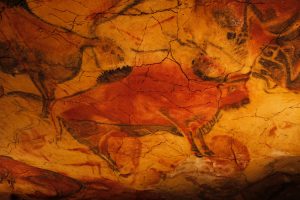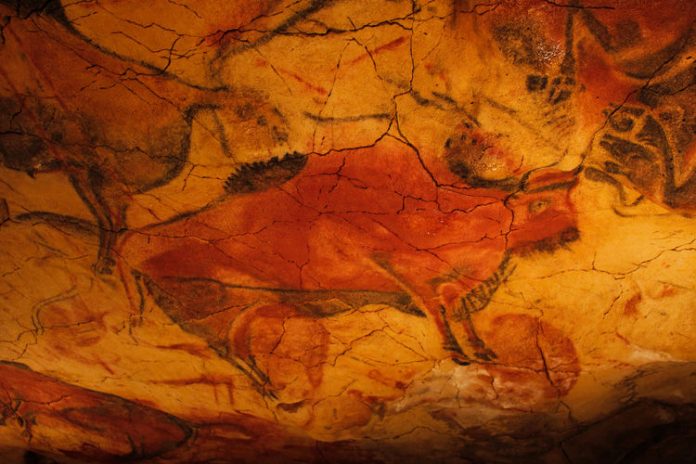Since, at the present moment, we have such ample examples around this country of how one might set about destroying culture, I thought that it would be at least entertaining to explore how culture is created and how culture is contextualized in relation to civilization. There are sciences which study the creation of culture; I respect these sciences very much, but this particular essay is not scientific. Mostly it will present a framework of interpretation which might be applied philosophically with the end of explaining certain meta-phenomena across cultures and civilizations. In fact, the definitions which I will apply to the ideas of “civilization” and “culture” may not be current consensus in the academically authoritative community. They are my own definitions only, which are tangential to my theoretical framework of philosophy. They may well be rubbish. Now, let us begin at the beginning: let us construct certain parameters within which such vast concepts as “civilization” and “culture” may be comprehended – well, partially so at any rate. There are, I conjecture, four primary contracts between peoples, each contract manifesting as a social unit or unity which is shared among more than one person. These contracts each are responses to innate instincts, perhaps even archaic instincts, which demand certain modes of behavior. The simplest of these contracts is the family, but this unit I will not talk about; I will instead assume its intrinsic value in relation to the three remaining contracts. Before I do denote the remaining three however, it is helpful to realize that in a generic sense, each contract which will be discussed is founded upon the preceding construct. Necessarily this means that family is not founded upon a construct preceding it, for there is no construct which precedes it which in any way resembles it. I am satisfied in saying here, due to my flamboyant disqualifications in perusing the topic, that there seems to be significant biological and psychological instincts which might explain the construct of the family contract. The second most basic communal contract is society. There is nothing lofty about society. It is an adherence to a very primitive instinct and particularly the recognition that groups often survive in a better manner than individuals. The instinct of self-preservation in fact might well be said to be the creation of society. Society, in my humble opinion, is not complicated. It merely signifies a group of people, or animals, living together, eating together, hunting together, surviving together. Because humans are slightly more complex than the rest of animal-kind though, I think that societies do not last very long. Speech, for instance, will introduce variables so complex into human affairs, that society is simply not able to maintain a sensible parameter for containing these complexities. Human reflection and the creation of symbols is the integration and upgrading of society; a greater contract is now assimilated, and this third contract I call culture. Under-lying culture there still remains society, that very basic social, or herd, contract. But culture synthesizes so many more modes of behavior and thought that the previous contract of society seems to be like a pigpen in comparison to a Malibu mansion. It seems as if a new environment has been engineered to foster a more advanced evolution and flourishing in human beings. When it is said that culture synthesizes many modes of thought and behaviors, it indicates that culture is the only true construct, the most basic one, under which living, thinking, reflecting, creating human creatures are able to exist. Exist, that is, in any harmony or productive manner.
Culture has many definitions, most of which seem like shallow generalizations and some few of which I do not understand. I will give my own definition, for better or worse. Culture is the fruit of human reflection; human consciousness; human curiosity. It is also inevitable. Because human beings are impelled by their curiosity to reflect, and through reflection they infuse into themselves consciousness. Now, because reflection is founded only upon curiosity, culture was a natural harvest of the human person; I reject the idea that it is an artificial construct and I reject too the theory that culture is the product of innate advancements in the human creature. There is no doubt in my mind that culture becomes more complex with the technical sophistication of human endeavors, but culture is primarily rooted in the human creature’s response to curiosity, which is a very archaic instinct. The mechanism which founded the first shadows of culture is curiosity; the mechanism which allowed man to give flesh to the shadow was reflection. Curiosity is a broader movement in the human than it seems to be in any other animal, yet a greater difference is evident in the capacity to savor that curiosity and the capacity to set about devising complex means of satiating that particular curiosity. I would theorize that the very first means the human devised for satiating any curiosity was to create symbols to convey not only the curiosity itself, but the response which is evoked in the human person by that curiosity. A simple example will explain what I mean: a man sees an animal of some sort. Perhaps it is a deer, or a bison, or even a lion. He is curious about the animal’s movement, its appearance, its capacity for survival, he is curious about its very existence. He reflects upon the curiosity, which, it might be said, internalizes this curiosity. By this internalization, the curious principle is placed within an atmosphere where it is able to be, more or less, peacefully comprehended. In other words, sooner or later, the human being realizes the usefulness of positing his curiosities within his own mind; he makes his curiosities his own property. His response to such an internalized curiosity is also simple: he creates a representation of the object of his curiosity. He draws the animal. And so the human creature becomes an artist; he enters into the first universal priesthood of the human species.
But now, it seems that a dichotomy must be drawn, if only tentatively and if only along very blurred lines. This dichotomy is the basis of human culture and, beyond culture, civilization. It is this: human creatures will individualize something before they share it. They will internalize something before they will externalize it. This is, quite literally, the structure of human art, human religion, human philosophy, human science, and indeed, all human knowledge. It appears, and I will contend, that this dichotomy is universal in human nature itself; it is one of the vestiges of a natural law, or a natural archaic instinct. Reverting briefly to this nova artifex humana, I conjecture that the comprehension of curiosity creates an internal tension or joy, which impels the recipient of this curiosity to release the tension through self-expression, just as one who feels anger may release his internal tension through vocal release (yelling) or physical release (punching, kicking). The creation of a symbol to represent the object of the curiosity is creative release of tension which is effected by comprehension. Yet something even more profound is at work within this human creature; the desire for sharing this comprehension with other human creatures through external symbols indicates that the individual human, the creator of the symbols, has already understood, to an extent at the least, the betterment which he has undergone through comprehension and creative release. The darkness over the abyss of consciousness is lightening now and form is rising in swirls; humanity, that is to say, permanent curiosity, has been discovered.
The individual human, the artist, may also create symbols in order to remind himself of the curiosity with which he was first moved; of course, the symbol may also itself become an object for contemplation, especially for other human creatures. The artist, even at this very early stage, grasps that curiosity itself is not a principle which dies away. The work of art will replace its model(in this case, the living animal upon which the drawing was based) as the object of a contemplation; in this way, the curiosity of the human person is able to satiate itself for ever and ever, even if the original object of curiosity is no longer present to the human contemplater. Culture is the shared externalization of a creative response to fundamental curiosity. The artist is the first archetype of cultural creation: he is the discoverer of humanity. And that is where I shall leave off for the moment.
Image of bison is in Altamira cave in Spain. Dating indicates it is about 20,000 years old. Photo by Dario Lorenzetti (CC BY-NC-SA)














